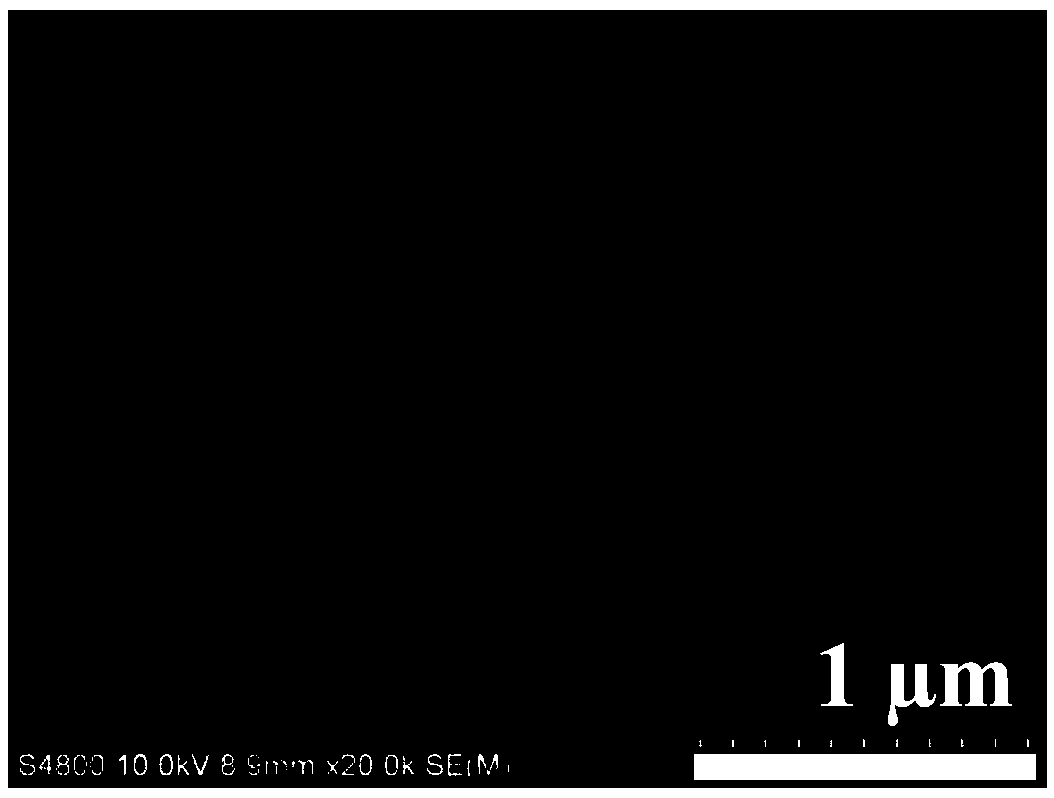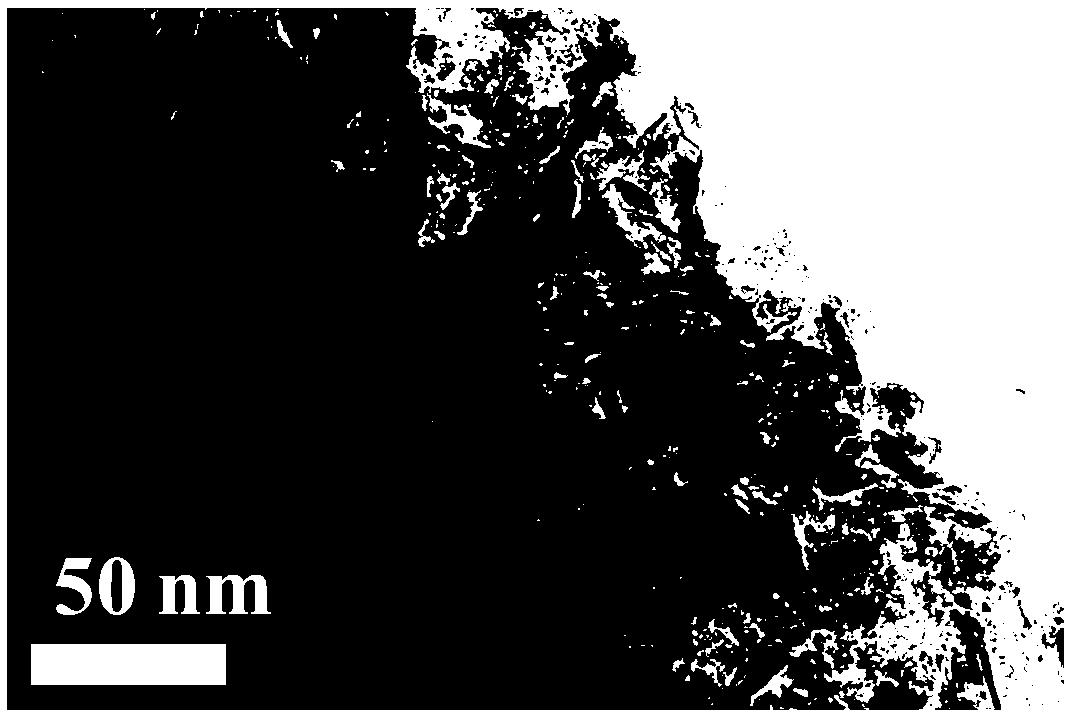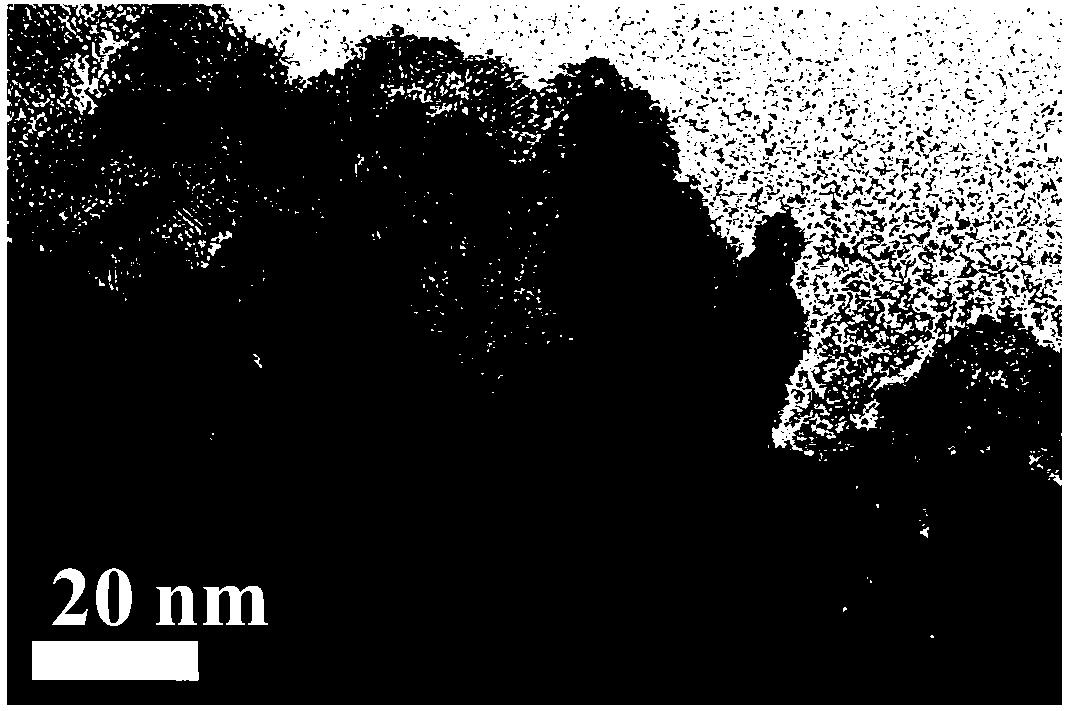Platinum/titanium dioxide nano flower composite material as well as preparation method and application thereof
A technology of titanium dioxide and composite materials, which is applied in the field of nanomaterials and photocatalysis, can solve the problems of internal composite limitations, low photocatalytic hydrogen production efficiency, etc., and achieve the effect of improving efficiency, improving photocatalytic hydrogen production performance, and facilitating industrial production
- Summary
- Abstract
- Description
- Claims
- Application Information
AI Technical Summary
Problems solved by technology
Method used
Image
Examples
Embodiment 1
[0020] Step 1: Add 0.025 mL of diethylenetriamine (EDTA) to 31.5 mL of isopropanol, and stir for 10 min. Then, 1.125 mL of diisopropyl di(acetylacetonato)titanate was added to the solution. Stirring was continued for 10 min. The resulting mixed solution was poured into a reaction kettle, and subjected to solvent heat treatment at 200° C. for 24 hours. After the reaction, the precipitate was washed three times with deionized water and absolute ethanol, placed in an oven at 60°C, and dried for 24 hours. Finally, the reactant was placed in a muffle furnace with a heating rate of 1°C / min and a temperature of 425°C. Annealed for 2 hours to obtain the precursor titania nanoflower material.
[0021] Step 2: Take 100 mg of the precursor titanium dioxide nanoflowers and add it to 50 mL of deionized water, and add 0.297 mL of chloroplatinic acid solution containing 2.97 mg of chloroplatinic acid. Keep the temperature of the solution water bath at 80° C., and the reaction time is 2 ho...
Embodiment 2
[0027] Step 1: Add 0.025 mL of diethylenetriamine (EDTA) to 31.5 mL of isopropanol, and stir for 10 min. Then, 1.125 mL of diisopropyl di(acetylacetonato)titanate was added to the solution. Stirring was continued for 10 min. The resulting mixed solution was poured into a reaction kettle, and subjected to solvent heat treatment at 200° C. for 24 hours. After the reaction, the precipitate was washed three times with deionized water and absolute ethanol, placed in an oven at 60°C, and dried for 24 hours. Finally, the reactant was placed in a muffle furnace with a heating rate of 1°C / min and a temperature of 425°C. Annealed for 2 hours to obtain the precursor titania nanoflower material.
[0028] Step 2: Take 100 mg of the precursor titanium dioxide nanoflowers and add it to 50 mL of deionized water, and add 0.595 mL of chloroplatinic acid solution containing 5.95 mg of chloroplatinic acid. Keep the temperature of the solution water bath at 100° C., and the reaction time is 5 h...
Embodiment 3
[0032] Step 1: Add 0.125 mL of diethylenetriamine (EDTA) to 31.5 mL of isopropanol, and stir for 10 min. Then, 4.5 mL of diisopropyl di(acetylacetonato)titanate was added to the solution. Stirring was continued for 10 min. The resulting mixed solution was poured into a reaction kettle, and subjected to solvent heat treatment at 220° C. for 36 hours. After the reaction, the precipitate was washed three times with deionized water and absolute ethanol, placed in an oven at 60°C, and dried for 24 hours. Finally, the reactant was placed in a muffle furnace with a heating rate of 10°C / min and a temperature of 425°C. Annealed for 2 hours to obtain the precursor titania nanoflower material.
[0033] Step 2: Take 100 mg of the precursor titanium dioxide nanoflowers and add it to 50 mL of deionized water, and add 0.297 mL of chloroplatinic acid solution containing 2.97 mg of chloroplatinic acid. Keep the temperature of the solution water bath at 80° C., and the reaction time is 2 hou...
PUM
| Property | Measurement | Unit |
|---|---|---|
| thickness | aaaaa | aaaaa |
| size | aaaaa | aaaaa |
| particle diameter | aaaaa | aaaaa |
Abstract
Description
Claims
Application Information
 Login to View More
Login to View More - R&D
- Intellectual Property
- Life Sciences
- Materials
- Tech Scout
- Unparalleled Data Quality
- Higher Quality Content
- 60% Fewer Hallucinations
Browse by: Latest US Patents, China's latest patents, Technical Efficacy Thesaurus, Application Domain, Technology Topic, Popular Technical Reports.
© 2025 PatSnap. All rights reserved.Legal|Privacy policy|Modern Slavery Act Transparency Statement|Sitemap|About US| Contact US: help@patsnap.com



